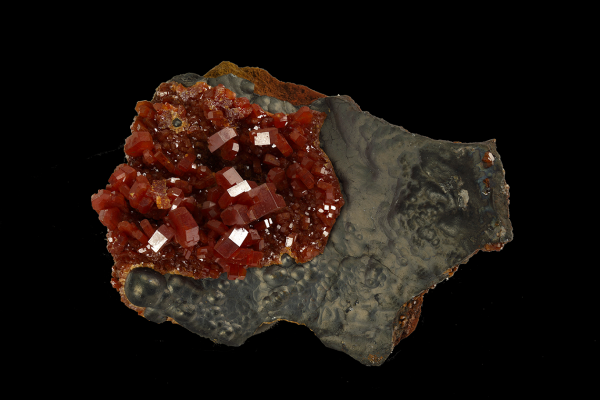Decorative Stone
Decorative stones are rocks that are used for their beauty. They are often cut and polished to further enhance their appearance. As opposed to gemstones, decorative stone is used on a larger scale, largely in buildings both internally and externally as well as in furnishings.
The Museum has a large collection of decorative stones, including the Faustino Corsi collection, which the Museum acquired in 1827. The Corsi collection comprises 1,000 samples of ancient and modern decorative stones (marbles, granites, serpentines, jaspers, etc), each approximately 145 x 73 x 40 mm, and polished on the top and sides. Faustino Corsi (1771–1846) compiled the collection in the early 19th century, first collecting material used in ancient times across the Roman Empire, and later adding decorative stone from contemporary quarries, mainly in Italy, but also Russia, Afghanistan, Madagascar and Canada. Corsi enjoyed visits by many of the patrons of art and archaeology of the time, including William Cavendish, 6th Duke of Devonshire, who added a fine suite of Derbyshire decorative rocks and minerals to the collection.

A selection of Corsi decorative stones.
Left: Porfido serpentino antico; back right: Granito orbiculare di Corsica; front right: Sicilian jasper.
Corsi published a catalogue of his collection in 1825, called 'Catalogo ragionato d'una collezione di pietre antiche', which provides the names and descriptions of the stones, as well as the locations of the quarries from which they were sourced. It also gives examples of where different types of decorative stone could be observed in Rome.
In 1827, Stephen Jarrett, a wealthy Magdalen College student, purchased the collection from Corsi and presented it to the University of Oxford. It is an exceptional reference for identifying and researching stones used to ornament buildings, furniture and artefacts from ancient times, through Byzantine and Baroque periods, to the modern period. Bridging the arts and the sciences, it is used by conservators, artists and those in the antiques trade, as well as archaeologists and geologists.
All 1,000 polished stone slabs are illustrated on the Corsi collection website, where a database of modern information about the stones complements Corsi's original 1825 catalogue.
Please note that some search functions in the Corsi Collection website are not working. We thank you for your patience as we work to resolve these issues.
If you have any questions about the Corsi collection, please contact eliza.howlett@oum.ox.ac.uk. We will try to answer your enquiry as soon as possible.








